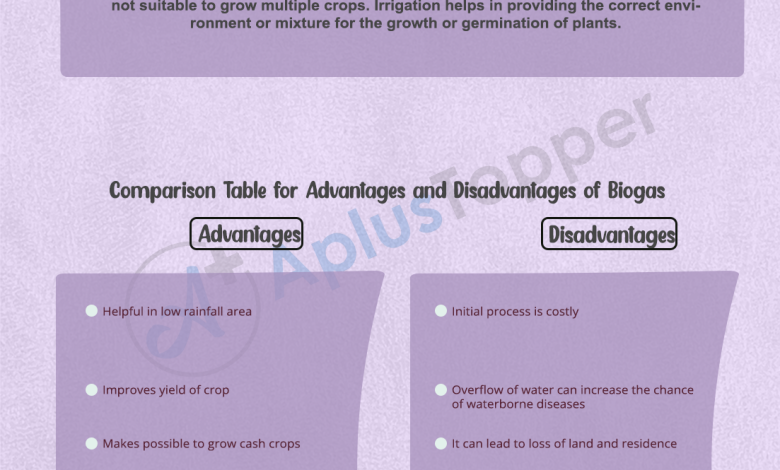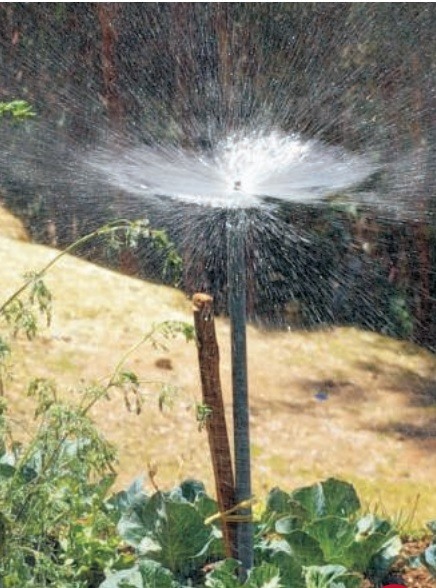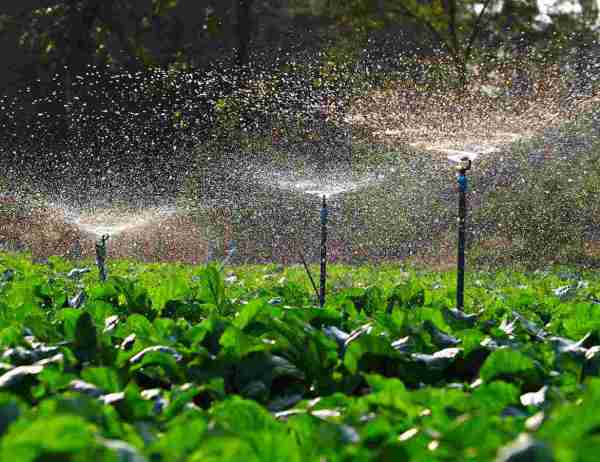What is Microsprinkler Irrigation: Advantages and disadvantages

Today we will talk about micro- sprinkler irrigation, a system with many advantages for the urban garden. Irrigating with micro- sprinklers saves us water and time, since it is a localized automatic irrigation system.

After having seen the keys to start planning irrigation and a classification with the different types of irrigation for the orchard, we are going to stop at each one of them, seeing the advantages and disadvantages of irrigation systems. Today, as we have introduced, we will talk about irrigation with micro-sprinklers, one of the most advantageous systems when it comes to watering garden plants.
What is micro-sprinkler irrigation?
Micro-sprinkler irrigation is a variant of sprinkler irrigation. In this type of irrigation, the irrigation micro-sprinklers or emitters launch curtains of water droplets under pressure, the same as in sprinkler irrigation but with less range – the water does not reach as far – and the drops are smaller.

Micro – sprinklers are ideal for watering small plants such as vegetables. Its use is widespread in greenhouses and nurseries, especially in leafy vegetables (lettuce, spinach, cabbage…) and also for garden irrigation.
Micro-sprinkler irrigation system: Advantages and Disadvantages
As we have done in other posts about irrigation systems, we are going to see the advantages and disadvantages of this irrigation method compared to other systems such as sprinklers, drip irrigation, S-surface irrigation or exuding tape.
ADVANTAGES OF MICRO-SPRINKLER IRRIGATION
- It is a very versatile system, it adapts to fruit trees in all stages of growth and is also very suitable for garden plants, flowers…
- Its use represents a saving of water compared to traditional sprinkler irrigation or surface water irrigation systems, such as furrow or blanket irrigation.
- It is very uniform, more than dripping, and it is less likely that the emitters will clog, since the ducts and the speed of the water are greater.
- If this system is used, it is very possible that less fertilizers are needed (because if they are liquid they can be applied with the irrigation water, so their application is more efficient).
- It is more comfortable and requires less physical effort. Like other systems, it can be automated with an irrigation programmer.
- It improves the leaching of the soil in a way that removes harmful salts from the roots of the plant.
- Useful in crops that require specific conditions: it increases the environmental humidity and helps to lower the temperature, so that microclimates can be created within the orchard if there are plants that require it.
- Suitable for irregular terrain with slopes and slopes, even in them the uniformity is quite high.
- If there are problems in any micro-sprinkler, it is easier to detect than in drip irrigation.
DISADVANTAGES OF MICRO-SPRINKLER
- High initial investment, micro-sprinklers are more expensive than drippers or exuding tape.
- Once irrigation has been established, the installation can interfere with cultivation or land preparation work.
- It is a fixed system with many exposed elements, so it can be damaged or broken.
- If the system is not used for a period of time the nozzles and pressure regulators can become clogged.
- It is necessary to study and plan in advance where the sprinklers will be placed and the distance between them according to the plants in the orchard
- Strong winds can affect the uniformity of irrigation although somewhat less than in the case of conventional spraying.
Home micro-sprinkler irrigation
In this video, an ecological farmer from the province of Aija, in Peru, tells us how, at more than 3,000 meters of altitude and with water scarcity, micro-sprinkler irrigation has been a very effective solution for irrigating his crops while spending the least amount of energy. water possible.
For 20 years, this and other farmers in the area have devised and improved a micro-sprinkler irrigation system that they make themselves by recycling materials: WIRES, NAILS AND PEN CAPS, among other things! As they say, these sprinklers are easy to make, cheaper than those that we can buy in stores and also have a longer useful life. Super interesting everything they tell us in this video:
In this link that I leave you, you can see the file with the characteristics of the artisanal micro-sprinkler irrigation system, the steps to build the micro-sprinklers and a diagram with an example of the complete installation. I hope you have found this handmade system as interesting as I did, but it is so effective.
Well, that’s it for today’s article on types of irrigation. You can ask questions, suggestions or comment on your experience with the different systems in the comments below (images can also be attached). More articles on irrigation systems in the How to garden category.
References
- Fernández Gómez, R., et al, 2010. Irrigation manual for farmers: module 4. Localized irrigation. Ministry of Agriculture and Fisheries of the Junta de Andalucía, Spain.
- Demin, PE, 2014. Contributions to improve the management of irrigation systems. Irrigation Methods: Fundamentals, Uses, and Adaptations. National Institute of Agricultural Technology. Catamarca Regional Center, Argentina.
- Martín Rodríguez, A. et al., 2016. Garden irrigation manual. Ed. Junta de Andalucía, Ministry of Agriculture and Fisheries.



![Photo of Sow Gardenias: [Care, Planting, Watering, Substrate]](https://www.complete-gardening.com/wp-content/uploads/2021/06/gardenia_1583842589-390x220.jpg)
![Photo of Prune a Carob Tree: [Importance, Time, Considerations and Steps]](https://www.complete-gardening.com/wp-content/uploads/2022/08/prune-a-carob-tree-importance-time-considerations-and-steps-390x220.jpg)